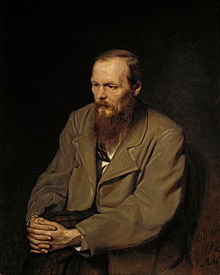
While the story of the real identify of Stephanie Harvey is interesting in itself, historians and editors should be more concerned with how this trickster was able to publish a fake claim that Dickenson met Dostoyevsky, and receive citations in so many essays and biographies.
[read part I: The Curious Case of Stephanie Harvey]
The lengthy story explores the reasons for duping, which are worth exploring here.
1.) The article was modest. The article points out that the short, 3-page article included nothing in the title related to Dickenson meeting Dostoyevsky. The author appeared to have stumbled upon a great discovery and had no idea what she had found. This feigned innocence added a sense of credibility.
2.) The citation was obscure, but seemed legitimate. The letter supposedly saw publication in a 1987 edition of Vedomosti Akademii Nauk Kazakhskoi SSR (Bulletin of the Kazakh SSR Academy of Sciences). Non-Russian speakers would have a tough time tracking down a copy of this journal to see if there really was a letter by Dostoyevsky in there. Even if the historian found the journal, there is now the task of translating.
3.) We wanted it to be true. This is probably the most damning realization. The idea that Dickenson and Dostoyevsky met was just too good to pass up. The history field values novelty, like all other fields.
Our scrutiny as historians must remain high at all times, even when the source is in another language, but especially when the source tells a new, intriguing story that we only dreamed of being true.
Online Learning Tips, Student Contributor
Comments are closed.